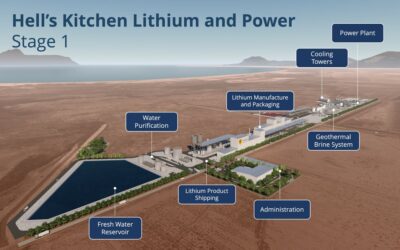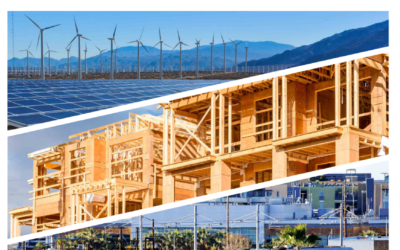The city of Palm Desert is taking a significant step toward securing its financial future. At its June 13 meeting, the City Council advanced a ballot measure that proposes a one-percent sales tax increase. This measure, known as the Transactions and Use Tax (TUT), will be presented to voters in the upcoming General Municipal Election on November 5, 2024.
If the ballot measure is successful, the sales tax rate in Palm Desert, currently at 7.75%, would rise to 8.85%. However, if a proposal under review by the Riverside County Transportation Commission to increase its sales tax rate by one percent to fund transportation projects were also included on the November 5 ballot and approved, the sales tax rate in Palm Desert would jump to 9.75%, resulting in a combined increase of nearly 25%.
The Palm Desert ballot measure will require a simple majority of votes in favor to pass because it will be presented as a tax to be used in a general way, not committed to a specific use, such as covering only the continued massive increases in public safety costs. If the RCTC ballot measure were to move forward, it would require approval from two-thirds of voters countywide to take effect. Getting the RCTC measure to the November 5 ballot will require two-thirds approval from the commission, which includes a council member from each of the county’s 28 cities, along with the Board of Supervisors plus one person appointed by the governor. The RCTC is scheduled to consider its new tax proposal at its July 10 meeting.
Financial Necessity and Priorities
With operating costs rising faster than revenues, maintaining essential services has become increasingly challenging for Palm Desert. Financial projections indicate that without a new revenue source, the city faces significant budget deficits and potential service reductions if they move forward with their plan to substantially increase investments in police and fire assets and salaries and parks in the city’s “North Sphere” area. The city says that its current and future infrastructure – including a new full-service fire station, additional police officers, new parks, community centers, and streets – requires larger investments to maintain current standards elsewhere in the city.
The financial model forecasts revenue and expenditures based on several known factors. For expenditures, the model assumes a status quo staffing and service model and factors in contractual obligations, existing obligations, approved salaries and benefits increases, actuarially determined contributions to CalPERS for the city’s Unfunded Accrued Liability (UAL), and a marginal and steady rise in maintenance and operational costs to account for customary inflation.
The financial model assumes a smooth standard revenue growth trend, factoring in any new revenues from entitled development and other reasonable assumptions. Given the discussed assumptions, expenditure growth is expected to outpace revenue increases in the forecast model.
At the June 13 meeting, Veronica Chavez, Palm Desert’s Director of Finance, highlighted the pressing need for the new tax. “Without a new revenue source, the city faces significant budget deficits and potential reductions in services,” Chavez explained. The addition of a one-cent sales tax is expected to generate approximately $25 million annually. These funds will help maintain 9-1-1 emergency medical and police/fire response services, repair and improve streets and public facilities, and support youth and senior programs.”
Property Tax Revenue Issues
During their meeting, city representatives emphasized that despite the significant growth expected in Palm Desert’s northern region, with over 5,000 new housing units either under construction or approved, the property tax revenue generated from this development will be minimal.
Council member Evan Trubee inquired about the amount of property tax revenue generated now in the North Sphere and what is anticipated as new development occurs. “I hate voting for a tax raise, but upon build-out of the northern end of town, roughly 5,000 homes, let’s say, roughly how much property tax revenue would that generate?”
Finance director Chavez pointed out that the North Sphere area is predominantly still in what is referred to as a project area for the city’s redevelopment agency. “The city is not a taxing entity [for the North Sphere area] and does not have a pass-through agreement with the redevelopment agency. So, the city does not derive any additional property tax funds or tax increment from the north area, aside from what they call SB 211, which is just a minute amount.” She noted, “The current assessed value in that area from the JW Marriott all the way up to the freeway is $2.4 billion. The city receives about $300,000 a year out of that area. And so, at build-out, considering that Marriott’s included, there’s no way that we’re going to match that, double it, you know, triple it, whatever we anticipate is going to be less than that. So, I can’t see it doubling what we receive as the city. The same goes for fire. Fire also does not have a tax agreement in Project Area Two. And so, the amount they receive almost matches what the city receives. So, we’re not going to see much. I think the number that we talked about, our percentage of the 1%, is going to be a drop in the bucket. It’s probably a hundred thousand dollars max.”
Trubee responded, “All through our discussions, it was in the six figures, not the seven figures, right?”
Chavez affirmed Trubee’s statement by stating, “Right. And yet those 5,000 additional homes, to keep our levels of service, will require millions of dollars of investment in public safety. So, certainly, property tax is not going to generate much.”
Detailed Spending Plan
The proposed use of the new tax revenue prioritizes several key elements:
- Public Safety: Significant funds will be directed toward constructing and staffing a new fire station in the city’s North Sphere area, rehabilitating existing ones, and increasing police patrol staffing to address rising crime rates. These enhancements are projected to require more than $45 million over the next five years.
- Infrastructure: According to city staff, upgrades to the city’s flood control infrastructure and public works maintenance are necessary. Projects like the North Sphere Flood Control, which will address long-term impacts and prevent future flooding, are expected to cost roughly $18.5 million.
- Community Amenities: Investments in the Palm Desert Municipal Library and the North Sphere Regional Park aim to enhance community resources and recreational spaces. The library construction is estimated at $30 million, and a new regional park at $20 million.
- Financial Reserves: Maintaining a healthy reserve fund is crucial for financial stability and preparedness for future emergencies. The city plans to use part of the new revenue to replenish emergency and operational reserves.
If approved by voters, the new sales tax would take effect on April 1, 2025. The tax is structured so that all funds generated will remain in Palm Desert, directly benefiting the local community. The measure includes provisions for public spending disclosures and audits to ensure transparency and accountability.
The City Council has taken steps to consolidate the municipal election with the statewide general election to streamline the process and encourage higher voter turnout. The consolidation request, along with the measure itself, will be submitted to the Riverside County Board of Supervisors and the Registrar of Voters for approval.
Community Engagement and Concerns
During recent outreach efforts, an overwhelming majority of residents emphasized the importance of maintaining adequate emergency response times and public safety services. Surveys found that more than 85% of respondents viewed these services as very important.
Mayor Pro Tem Jan Harnik echoed these sentiments, noting the critical role of quick response times in emergencies. “No one likes a tax increase, but no one likes to call 911 and not get a fast response,” Harnik said. “They don’t like that to a much greater level than they don’t like a one-cent sales tax.”
As part of its community outreach process, the city conducted a survey that found roughly 57% of respondents were supportive of a sales tax measure. However, not all feedback was entirely positive.
Stephen Nelson, a resident of the city’s north end who is running for the newly formed City Council District 3, expressed general support for the measure but emphasized the need for fiscal discipline. “The city needs to tighten our belts to ensure we don’t find ourselves in the same situation down the line,” Nelson said.
Resident Gregg Akkerman acknowledged the measure’s potential benefits but raised concerns about the lack of alternative funding mechanisms. “We were told that 70% of that money will come from people who don’t live here. That sounds impressive, but 100% of everyone who lives in Palm Desert will be spending more money because of this,” Akkerman said. “If this tax is really the only way to solve our problems, I guess I can see that that’s a possibility.”
Brad Anderson, a resident of Rancho Mirage, was the most critical, urging the city to rethink its finances before implementing a tax increase. “I’m heavily concerned because I don’t even shop in Palm Springs due to their high sales tax,” Anderson said. “I’m sure tourists may rethink their visit for the next time just because of that.”
Next Steps
Residents have until August 19 to submit arguments for or against the ballot measure at city hall. Council members Jan Harnik and Kathleen Kelly agreed to work as a subcommittee on crafting the statement in support. The city’s official ballot statement will be included in voting materials sent to residents during election season.




